Summary Overview
HVAC Maintenance Services Market Overview:
The global HVAC (Heating, Ventilation, and Air Conditioning) maintenance services market is steadily growing, driven by rising demand in sectors such as residential, commercial, industrial, and institutional areas. This market provides a variety of services, including regular upkeep, emergency repairs, system structures, and energy-efficient solutions. Our analysis focuses on procurement trends, emphasizing cost-cutting measures and the use of innovative technology to improve service delivery and operational efficiency.
Key future difficulties in HVAC maintenance services include controlling service costs, assuring scalability for increasing operations, preserving system reliability, and integrating novel innovations into existing infrastructure. Smart HVAC systems and scheduled upkeep solutions are becoming increasingly important for boosting service operations, energy efficiency, and customer satisfaction. As worldwide demand for energy-efficient solutions grows, firms are using advanced market insights to improve service quality, decrease downtime, and limit operational risks, assuring long-term market competitiveness.
Market Size: The global HVAC Maintenance Services market is projected to reach USD 176.5 billion by 2035, growing at a CAGR of approximately 6.58 % from 2025 to 2035.
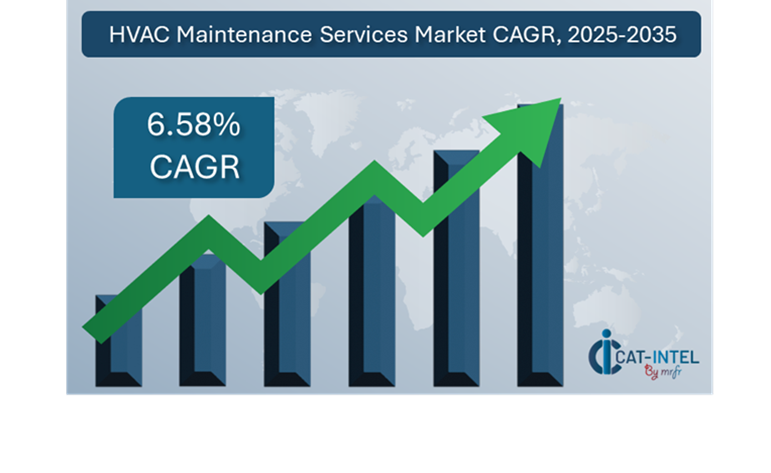
-
Sector Contributions: Growth in the market is driven by: -
Manufacturing and Facility Operations Optimization: Facility managers are working to improve operational efficiency by implementing predictive maintenance systems that enable proactive servicing and prevent unexpected breakdowns.
-
Commercial and Residential Growth: As demand for HVAC systems increases in both commercial and residential sectors, maintenance services are changing to provide better inventory management, performance tracking, and CRM.
-
Technological Transformation: AI, machine learning, and IoT are changing HVAC maintenance services through predictive maintenance, digitization, and improved system monitoring.
-
Innovations in Service Models: Modular service models enable organizations to pick and integrate only the amenities they require, reducing costs and complexity. This approach provides clients with more tailored HVAC solutions that fit specific operating needs.
-
Investment Initiatives: Smart HVAC systems and cloud-based service management platforms. These solutions minimize infrastructure costs, enhance telemetry capabilities, and allow for immediate efficiency tracking, making HVAC services accessible and efficient.
-
Regional Insights: Asia Pacific and North America dominate the HVAC maintenance services market, owing to strong digital infrastructure and growing usage of cloud-based technologies.
Key Trends and Sustainability Outlook:
-
Cloud Integration: Cloud integration has become more popular in HVAC services due to its scalability, cost efficiency, and increased data accessibility.
-
Advanced Features: Advanced energy-saving technologies like variable-speed motors and smart thermostats improve HVAC performance while lowering energy usage.
-
Focus on Sustainability: Increasing the usage of solar-powered HVAC systems and other renewable energy options in both home and business settings.
-
Customization Trends: Modular HVAC systems enable organizations to scale as needed and interact with other building management systems for greater control. -
Data-driven Insights: Advanced data analytics enables ongoing optimization of HVAC systems by analysing usage trends, resulting in increased energy efficiency and lower costs.
Growth Drivers:
-
Digital Transformation: Businesses are optimizing service delivery through digital transformation, which includes enhanced analytics, smart technology, and automated technologies.
-
Scalability Requirements: Service providers are providing scalable maintenance packages that may be tailored to the quantity and complexity of the HVAC system.
-
Demand for Process Automation: Automated processes such as scheduling, diagnostics, and reporting increase service delivery by decreasing human error.
-
Regulatory Compliance: Adherence to indoor air quality requirements, such as OSHA and EPA rules, ensures that HVAC systems provide safe and healthy air in the workplace and at home. -
Globalization: As businesses develop globally, there is a greater need for HVAC solutions that support multi-region operations, including multi-language and multi-currency systems.
Overview of Market Intelligence Services for the HVAC Maintenance Services Market:
Recent research has revealed numerous major obstacles in the HVAC maintenance services market, including high implementation costs and the requirement for customized service solutions. Market intelligence reports give practical information that assist firms in identifying cost-cutting methods, optimizing supplier management, and ensuring service implementation success. These insights not only help to ensure compliance with industry standards, but also to maintain high-quality service delivery while successfully managing operating costs.
Procurement Intelligence for HVAC Maintenance Services: Category Management and Strategic Sourcing
To remain competitive in the HVAC maintenance services industry, businesses are optimizing procurement procedures through meticulous expenditure analysis and vendor performance tracking. Effective category oversight and strategic sourcing are critical in lowering procurement costs and guaranteeing a steady supply of high-quality HVAC services solutions. Businesses that use actionable market intelligence can improve their procurement strategies, renegotiate better terms with service providers, and guarantee they get the most effective and cost-effective HVAC maintenance solutions to fulfil their operating demands.

Pricing Outlook for HVAC Maintenance Services: Spend Analysis
The pricing prognosis for HVAC maintenance services is projected to be moderately volatile, affected by several critical factors. These include technological developments as well as industry-specific customizing requirements. Regional pricing variances also influence the industry, as does the growing relevance of data security, regulatory compliance, and system integration, all of which put increasing pressure on pricing.
Graph shows general upward trend pricing for HVAC Maintenance Services and growing demand. However, there may be fluctuations influenced by economic conditions, technological advancements, and competitive dynamic.
Efforts to simplify procurement procedures, improve vendor management, and implement modular service models will be critical for cost reduction in the HVAC maintenance sector. Using digital technologies for market monitoring, predictive maintenance, and cost forecasting through analytics can help to improve operational efficiency and cost control.
Partnering with reputable HVAC service providers, negotiating long-term contracts, and investigating subscription-based service models are all important techniques for effectively managing expenses. Despite these hurdles, focusing on scalability, assuring consistent system performance, and implementing smart, cloud-based HVAC platforms will be crucial for cost-effectiveness and long-term service quality.
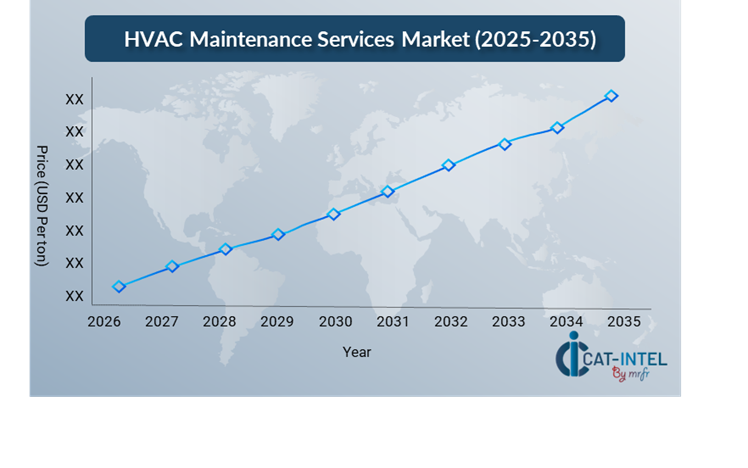
Cost Breakdown for HVAC Maintenance Services: Total Cost of Ownership (TCO) and Cost-Saving Opportunities
- Energy Consumption: (40%)
-
Description: A major component to HVAC operating expenses. HVAC systems often use a significant amount of energy to heat, cool, and ventilate, particularly in big commercial buildings.
-
Trend: Energy-efficient HVAC systems and the integration of smart thermostats, sensors, and IoT technologies to optimize energy usage are becoming increasingly popular.
- Maintenance and Service: (XX%)
- Labor Cost: (XX%)
- Part and Replacement: (XX%)
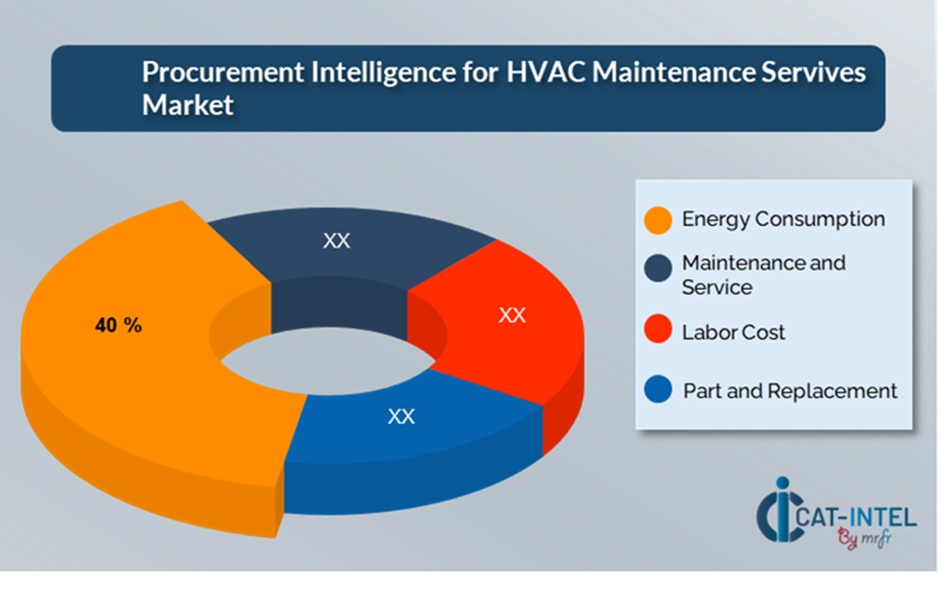
Cost-Saving Opportunities: Negotiation Levers and Purchasing Negotiation Strategies
In the HVAC maintenance services industry, streamlining procurement processes and using strategic negotiation strategies can result in significant cost savings and increased operational efficiency. Long-term partnerships with HVAC service providers, particularly those that provide modern, energy-efficient systems or cloud-based solutions, can result in more attractive pricing structures and terms, such as volume discounts and bundled service packages. Subscription-based arrangements and multi-year contracts allow you to lock in reduced rates while also protecting yourself from future price increases.
Collaborating with service providers who value innovation and scalability offers extra benefits. These companies frequently provide advanced predictive maintenance tools, energy management systems, and IoT integration, which can assist save long-term operational expenses. Implementing digital procurement technologies, such as contract management platforms and use analytics, can improve transparency, decrease overprovisioning, and assure optimal system utilization.

Supply and Demand Overview for HVAC Maintenance Services: Demand-Supply Dynamics and Buyer Intelligence for Effective Supplier Relationship Management (SRM)
The HVAC maintenance services market is growing steadily, driven by greater digital transformation efforts and rising demand for energy-efficient solutions in sectors such as residential, commercial, and industrial facilities. Technological breakthroughs, sector-specific requirements, and global economic conditions all have an impact on supply and demand dynamics in the market.
Demand Factors:
-
Digital Transformation Initiatives: Advanced HVAC solutions are in high demand due to the increased requirement for centralized building management systems and automated HVAC maintenance operations.
-
Cloud Adoption Trends: Because cloud-enabled HVAC systems facilitate remote monitoring, data analytics, and immediate operation tracking, they are becoming increasingly popular among organizations trying to improve system performance while lowering costs.
-
Industry-certain Requirements: Healthcare, manufacturing, and commercial real estate industries all demand HVAC maintenance services that adhere to certain regulatory standards and operating requirements.
-
Integration Capabilities: There is an increasing demand for HVAC systems that work smoothly with other corporate applications, building automation systems, and Internet of Things devices. This connection improves overall facility efficiency, enabling more thorough and efficient management.
Supply Factors:
-
Technological Advancements: Smart technologies, IoT sensors, and energy management systems, which are redefining HVAC maintenance services by enabling predictive maintenance and increasing energy efficiency, making services more competitive and effective.
-
Vendor Ecosystem: The HVAC maintenance services market is becoming more fragmented, with an increasing number of vendors, including large-scale suppliers and specialized niche players.
-
Global Economic Factors: In locations with high labour costs or strict regulations, HVAC services may be more expensive, whereas in other places, the adoption of more energy-efficient systems and lower labour costs might result in lower service pricing. -
Scalability and Flexibility: As modern HVAC systems become more modular, service providers may cater to enterprises of all sizes and complexities.
Regional Demand-Supply Outlook: HVAC Maintenance Services
The Image shows growing demand for HVAC Maintenance Services in both Asia Pacific and North America, with potential price increases and increased Competition.
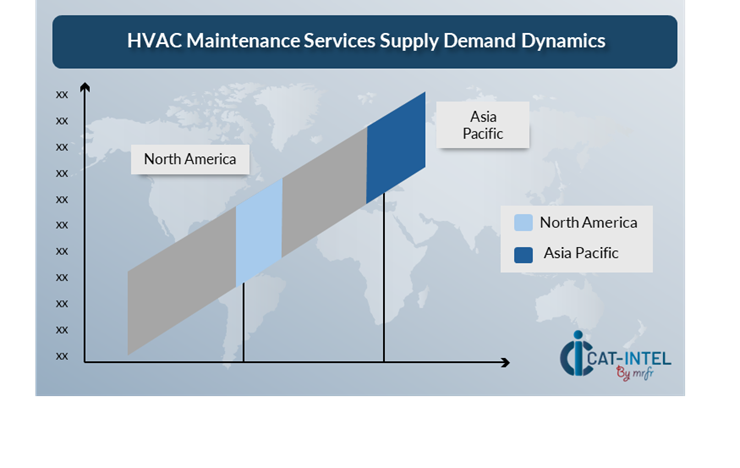
Asia Pacific: Dominance in the HVAC Maintenance Services Market
Asia Pacific, particularly East Asia, is a dominant force in the global HVAC Maintenance Service market due to several key factors:
-
Urbanization and Infrastructure Development: As cities grow, so does the demand for innovative HVAC systems and maintenance services to assure peak performance, energy efficiency, and comfort in newly built infrastructures.
-
Climate Conditions: The Asia-Pacific region, especially Southeast Asia and South Asia, has hot and humid temperatures. As a result, annual HVAC repair services are essential for guaranteeing dependable performance in these demanding conditions.
-
Strong Industrial Basis: Asia-Pacific is home to several of the world's largest manufacturing hubs. Electronics, automotive, and chemical industries all demand precise climate control for their manufacturing operations.
-
Focus on Energy Efficiency: Governments and businesses in Asia-Pacific prioritize energy efficiency and sustainability. HVAC maintenance services that promote energy efficiency are therefore in high demand. -
Increased Consumer Spending: The growing middle class in Asia-Pacific countries, particularly China and India, is driving demand for higher living standards and modern technologies, such as temperature control systems.
Asia Pacific Remains a key hub HVAC Maintenance Services Price Drivers Innovation and Growth.
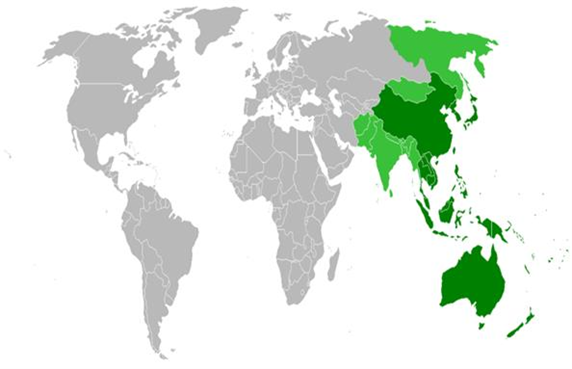
Supplier Landscape: Supplier Negotiations and Strategies
The HVAC maintenance services market's supplier environment is similarly broad and competitive, with a mix of global and regional service providers influencing industry dynamics. These vendors have an impact on key elements such as service cost, system customisation, and quality of service. Large, well-established HVAC companies dominate the market, offering complete maintenance packages, whilst smaller, specialized organizations focus on certain industries or sophisticated solutions.
The HVAC service provider ecosystem spans key worldwide locations, with big international corporations vying against creative local players that meet industry-specific needs. As enterprises prioritize energy efficiency, sustainability, and profitability, HVAC service providers are expanding their offerings by incorporating cutting-edge technology like predictive maintenance tools and IoT-enabled equipment. Suppliers improve service efficiency, enable remote monitoring, and manage energy more effectively by integrating cloud-based platforms and automation.
Key Suppliers in the HVAC Maintenance Services Market Include:
- Daikin Industries
- Johnson Controls
- Honeywell International
- Trane Technologies
- Carrier Global Corporation
- Siemens Building Technologies
- LG Electronics
- Mitsubishi Electric
- Rheem Manufacturing Company
- Hitachi Ltd.

Key Developments Procurement Category Significant Development:
Significant Development |
Description |
Market Growth |
The HVAC maintenance services market is rapidly expanding, driven by rising demand for energy-efficient solutions and advanced building systems across industries, particularly in emerging regions. |
Cloud Adoption |
A growing trend toward cloud-based HVAC management technologies is transforming the market. Cloud solutions provide remote monitoring, real-time diagnostics, and predictive maintenance, allowing organizations to control their HVAC systems from anywhere. |
Product Innovation |
These advances enable businesses to track system performance in real time, discover inefficiencies, and optimise energy consumption, resulting in long-term savings and increased operational efficiency. |
Technological Advancements |
Advances in technology like as machine learning, IoT integration, and robotic process automation (RPA) are greatly improving HVAC maintenance capabilities. Furthermore, smart HVAC systems equipped with IoT sensors provide more precise data for system enhancement. |
Global Trade Dynamics |
Changes in regional legislation, compliance needs, and economic policies are all affecting the adoption of HVAC maintenance services, particularly for multinational organizations that manage large, complex facilities |
Customization Trends |
The need for HVAC systems and maintenance services suited to specific company demands is increasing. Organizations are looking for modular HVAC systems that can be customized and incorporated into current building management systems. |
|
HVAC Maintenance Services Attribute/Metric |
Details |
Market Sizing |
The global HVAC Maintenance Services market is projected to reach USD 176.5 billion by 2035, growing at a CAGR of approximately 6.58 % from 2025 to 2035.
|
HVAC Maintenance Services Technology Adoption Rate |
Approximately 65% of organizations worldwide have implemented advanced building management technologies, with a major move toward cloud-based HVAC systems. |
Top HVAC Maintenance Services Industry Strategies for 2025 |
Integrating AI and machine learning for predictive maintenance, optimizing operations with modular and scalable systems, emphasizing energy-efficient solutions to achieve sustainability goals, and embracing mobile and cloud-based platforms for greater accessibility and management of HVAC systems. |
HVAC Maintenance Services Process Automation |
Routine functions including system diagnostics, maintenance scheduling, and energy optimization are automated in roughly 55% of HVAC system deployments. |
HVAC Maintenance Services Process Challenges |
Advanced systems have significant implementation costs, facility management teams are resistant to change, integrating new technologies with existing infrastructure is difficult, and continual system updates and maintenance are required to assure maximum performance.
|
Key Suppliers |
Leading providers include major names such as Daikin Industries Johnson Controls, and Trane Technologies, which provide comprehensive solutions for residential, commercial, and industrial sectors.
|
Key Regions Covered |
Asia Pacific and North America dominate the HVAC maintenance services market, owing to strong digital infrastructure and growing usage of cloud-based technologies. |
Market Drivers and Trends |
The growing demand for centralized building management systems, the transition to cloud-based HVAC solutions for scalability and efficiency, the need for real-time system performance insights, and the incorporation of advanced technologies such as IoT, AI, and machine learning for predictive maintenance, energy management, and system optimization. |

